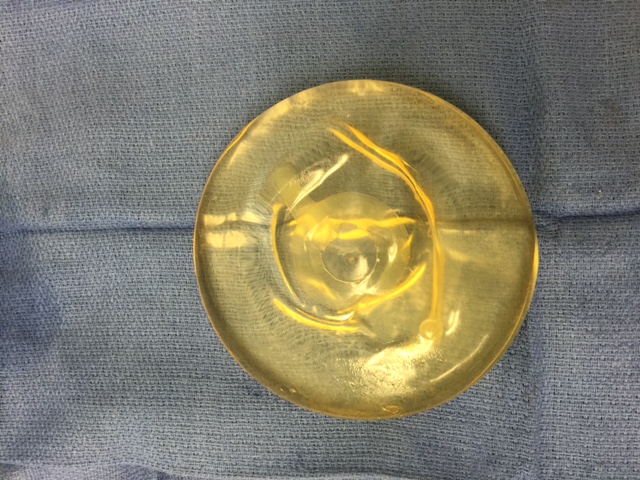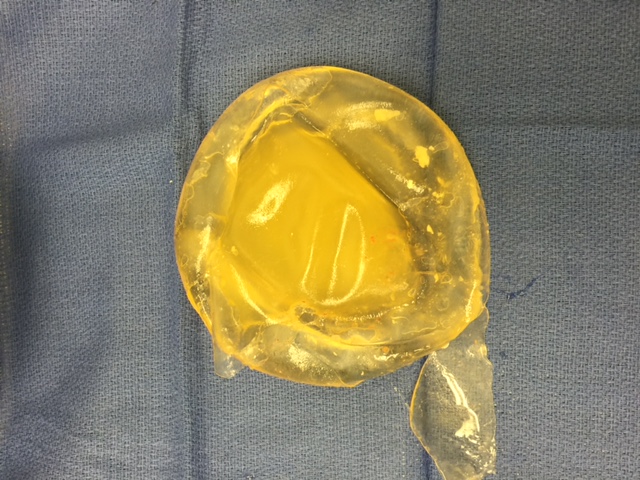

As with any surgery, breast augmentation and reconstruction are not without their own sets of risks. Silicone gel breast implants are the most popular choice because of the natural feel and softness of the implants. For many patients, the ability to have the feel and appearance of a natural breast is an important element of breast augmentation. However, silicone implants — like saline implants — can rupture, and this needs to be considered as part of the informed consent process of breast implant augmentation. These silicone implants, regardless of the manufacturer, are not necessarily lifetime devices, and patients should be aware of potential complications, including potential rupture. The mechanical integrity of the shell can weaken over time for varying, and often unclear, reasons. The FDA recommends getting an MRI at varying time intervals to examine the integrity of the implants.
On the right, Chicago plastic surgeon Dr. John Kim shows implants that are over 30 years old with a ruptured shell on one side as well as an intact implant. Over time, the ruptured silicone can create a scar that can be noticed or symptomatic. If a rupture is recognized, then secondary breast surgery and revision can be performed wherein the scar capsule and silicone can be grossly removed and replaced with intact fresh silicone or saline implants. Typically this revision breast surgery will take two to three hours and one to two weeks of acute healing.